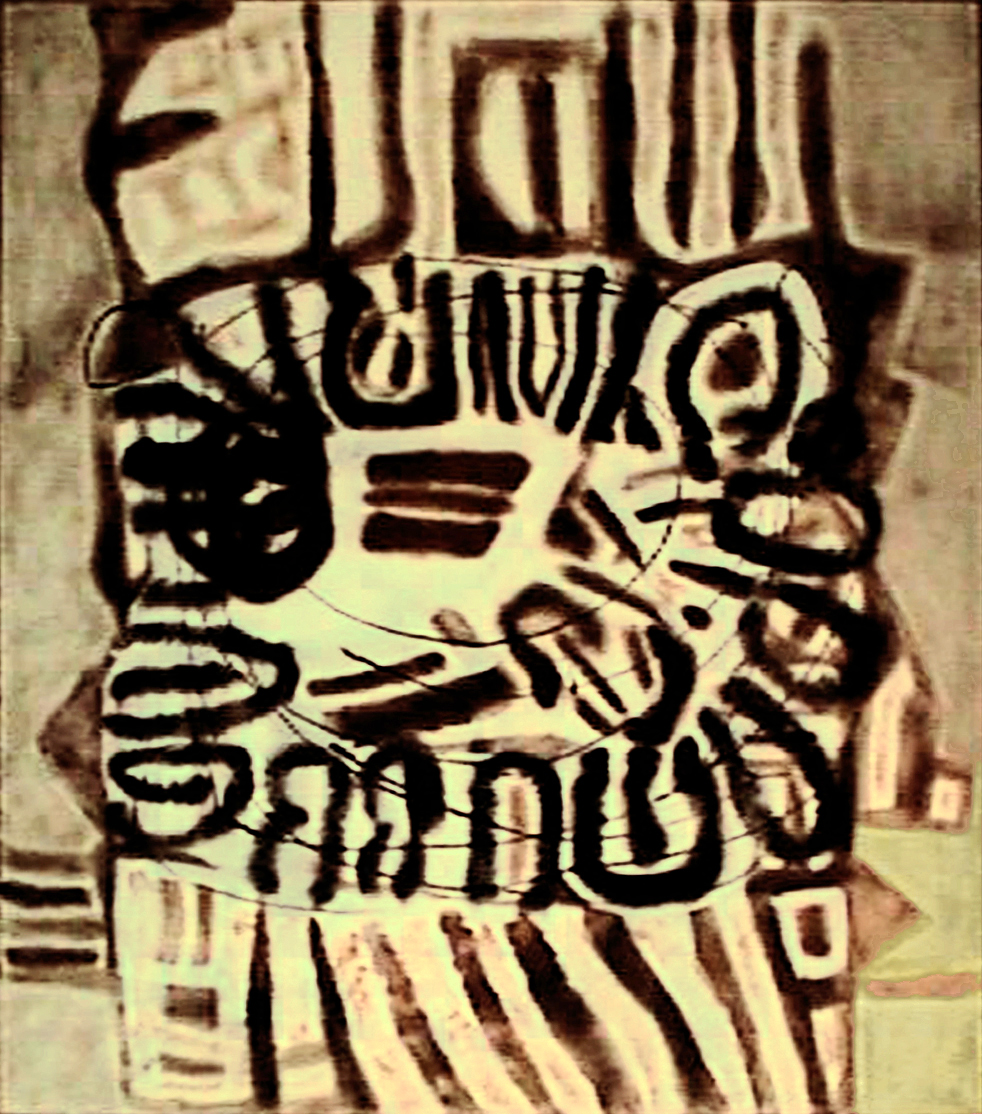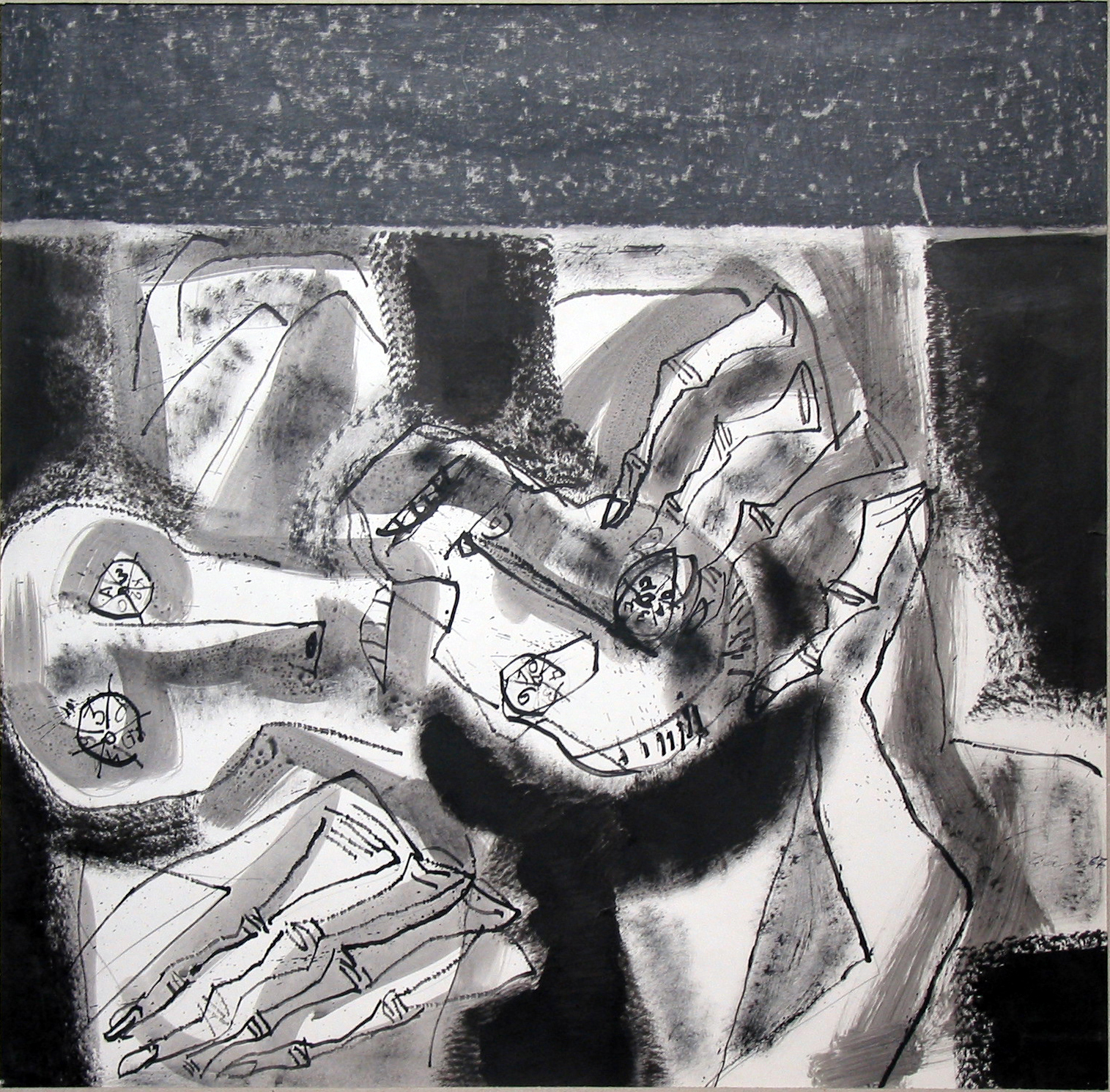Miloš Bajić (painter) on:
[Wikipedia]
[Google]
[Amazon]
Miloš Bajić ( sr-cyr, Милош Бајић; 1915 - 1995) was a Serbian

























Modernist
Modernism is both a philosophy, philosophical and arts movement that arose from broad transformations in Western world, Western society during the late 19th and early 20th centuries. The movement reflected a desire for the creation of new fo ...
painter, who is considered to be the founder of abstract painting in Yugoslavia
Yugoslavia (; sh-Latn-Cyrl, separator=" / ", Jugoslavija, Југославија ; sl, Jugoslavija ; mk, Југославија ;; rup, Iugoslavia; hu, Jugoszlávia; rue, label=Pannonian Rusyn, Югославия, translit=Juhoslavija ...
.
Early life
Miloš Bajić was born in 1915 in Resanovci, a village in theCondominium of Bosnia and Herzegovina
A condominium (or condo for short) is an ownership structure whereby a building is divided into several units that are each separately owned, surrounded by common areas that are jointly owned. The term can be applied to the building or complex ...
in Austria-Hungary
Austria-Hungary, often referred to as the Austro-Hungarian Empire,, the Dual Monarchy, or Austria, was a constitutional monarchy and great power in Central Europe between 1867 and 1918. It was formed with the Austro-Hungarian Compromise of ...
(now Bosnia and Herzegovina
Bosnia and Herzegovina ( sh, / , ), abbreviated BiH () or B&H, sometimes called Bosnia–Herzegovina and often known informally as Bosnia, is a country at the crossroads of south and southeast Europe, located in the Balkans. Bosnia and H ...
). In 1922, Bajić moved to Belgrade, the capital of Yugoslavia
Yugoslavia (; sh-Latn-Cyrl, separator=" / ", Jugoslavija, Југославија ; sl, Jugoslavija ; mk, Југославија ;; rup, Iugoslavia; hu, Jugoszlávia; rue, label=Pannonian Rusyn, Югославия, translit=Juhoslavija ...
(now Serbia
Serbia (, ; Serbian: , , ), officially the Republic of Serbia (Serbian: , , ), is a landlocked country in Southeastern and Central Europe, situated at the crossroads of the Pannonian Basin and the Balkans. It shares land borders with Hungar ...
), where he completed grammar school and teacher school. As a student, he published illustrations and caricatures in the daily ''Politika
''Politika'' ( sr-Cyrl, Политика; ''Politics'') is a Serbian daily newspaper, published in Belgrade. Founded in 1904 by Vladislav F. Ribnikar, it is the oldest daily newspaper still in circulation in the Balkans.
Publishing and owners ...
'' and satirical magazine '' Ošišani jež''. In 1935, Bajić became one of Petar Dobrović's students, finishing his first year in Beta Vukanović
Beta Vukanović (18 April 1872 – 31 October 1972), also known as Babette Bachmayer, was a Serbian painter and centenarian.
Biography
Born in Bamberg, Upper Franconia
Upper Franconia (german: Oberfranken) is a ''Regierungsbezirk'' (adminis ...
's class at the Belgrade School of Arts in 1937.
World War II
AfterKingdom of Yugoslavia
The Kingdom of Yugoslavia ( sh-Latn-Cyrl, separator=" / ", Kraljevina Jugoslavija, Краљевина Југославија; sl, Kraljevina Jugoslavija) was a state in Southeast and Central Europe that existed from 1918 until 1941. From 1918 ...
was invaded by the Axis powers of Germany
Germany,, officially the Federal Republic of Germany, is a country in Central Europe. It is the second most populous country in Europe after Russia, and the most populous member state of the European Union. Germany is situated betwe ...
, Italy
Italy ( it, Italia ), officially the Italian Republic, ) or the Republic of Italy, is a country in Southern Europe. It is located in the middle of the Mediterranean Sea, and its territory largely coincides with the homonymous geographical ...
, Hungary
Hungary ( hu, Magyarország ) is a landlocked country in Central Europe. Spanning of the Pannonian Basin, Carpathian Basin, it is bordered by Slovakia to the north, Ukraine to the northeast, Romania to the east and southeast, Serbia to the ...
, and Bulgaria
Bulgaria (; bg, България, Bǎlgariya), officially the Republic of Bulgaria,, ) is a country in Southeast Europe. It is situated on the eastern flank of the Balkans, and is bordered by Romania to the north, Serbia and North Macedo ...
in 1941, Bajić joined the Partisans, Yugoslav anti-Nazi resistance movement
A resistance movement is an organized effort by some portion of the civil population of a country to withstand the legally established government or an occupying power and to disrupt civil order and stability. It may seek to achieve its objective ...
. Occupying forces captured him in Belgrade in October 1942 and imprisoned him in Banjica Concentration Camp
The Banjica concentration camp (german: KZ Banjica, sr-Cyrl-Latn, Бањички логор, Banjički logor) was a Nazi Germany, Nazi German Nazi concentration camps, concentration camp in the Territory of the Military Commander in Serbia, the ...
. In September 1944, he was transferred to Mauthausen concentration camp
Mauthausen was a Nazi concentration camp on a hill above the market town of Mauthausen, Upper Austria, Mauthausen (roughly east of Linz), Upper Austria. It was the main camp of a group with List of subcamps of Mauthausen, nearly 100 further ...
.
While in detention, Bajić captured the scenes from prison life as drawings. and later said about his work:
After the liberation of the camp by American forces, Bajić returned to Belgrade with about 150 drawings and continued his education at University of Arts in Belgrade
The University of Arts in Belgrade ( sr-cyr, Универзитет уметности у Београду, Univerzitet umetnosti u Beogradu) is a public university in Serbia. It was founded in 1957 as the Academy of Arts to unite four academies. ...
.
Later years
In 1949, he graduated from the Academy of Arts in Belgrade in the class of Milo Milunović,Ivan Tabaković
Ivan Tabaković (10 December 1898, Arad – 27 June 1977, Belgrade) was an Austro-Hungarian-born Serbian painter.
Biography
Tabaković was born in Arad, then part of the Habsburg Empire, in 1898, to a Serbian family. He studied at the B ...
, and Nedeljko Gvozdenović
Nedeljko Gvozdenović ( sr-Cyrl, Недељко Гвозденовић; 24 February 1902 – 31 January 1988) was a Serbian painter of world renown. He is considered to be the greatest representative of the Belgrade School of Painting.
See also
* ...
. After finishing his specialist training with Marko Čelebonović
Marko Čelebonović ( sr-Cyrl, Марко Челебоновић; 21 November 1902 – 23 June 1986) was one of the most famous Serbian painters of the 20th century.modernism
Modernism is both a philosophy, philosophical and arts movement that arose from broad transformations in Western world, Western society during the late 19th and early 20th centuries. The movement reflected a desire for the creation of new fo ...
as a way of fighting socialist realism
Socialist realism is a style of idealized realistic art that was developed in the Soviet Union and was the official style in that country between 1932 and 1988, as well as in other socialist countries after World War II. Socialist realism is c ...
. He had his first individual exhibition at the ULUS Gallery in Belgrade in 1952.
He participated in founding the Art Colony in Bačka Topola
Bačka Topola ( sr-Cyrl, Бачка Топола, ; hu, Topolya, ) is a town and municipality located in the North Bačka District of the autonomous province of Vojvodina, Serbia. The municipality is composed of 23 local communities and has a po ...
(1953). This is where he completed his first large format mosaic and obelisk dedicated to the space conquest. His later work is characterised by numerous mosaics and fresco paintings (compositions in space), and particularly the memorial construction Partisan Necropolis in Resanovci (1971). In 1967, he exhibited for the first time the new cycle of large format Mauthausen paintings, inspired by the drawings he made during his time in the concentration camp.
In 1975, Bajić published monograph “Mauthausen 106621”. In the preface, he said:
Miloš Bajić received several national and international awards, decorations and honours. His works are today displayed in numerous museums. Most of his authentic drawings and paintings from the cycle Mauthausen are stored in carefully guarded family collection.
Family
His son is well-known Serbian film directorDarko Bajić
Darko Bajić (born on 14 May 1955) is a Serbian film director. He directed many movies and TV series popular with Serbian audience such as War Live, The Black Bomber, Sivi dom and Zaboravljeni.
Filmography
* Sivi dom (1985), TV series
* ...
.
Mauthauzen Collection

























References
{{DEFAULTSORT:Bajic, Milos 1915 births 1995 deaths Serbian painters Abstract painters Modern painters Mosaic artists Fresco painters University of Arts in Belgrade alumni Mauthausen concentration camp survivors Yugoslav Partisans members Yugoslav prisoners of war People from Bosansko Grahovo Serbs of Bosnia and Herzegovina